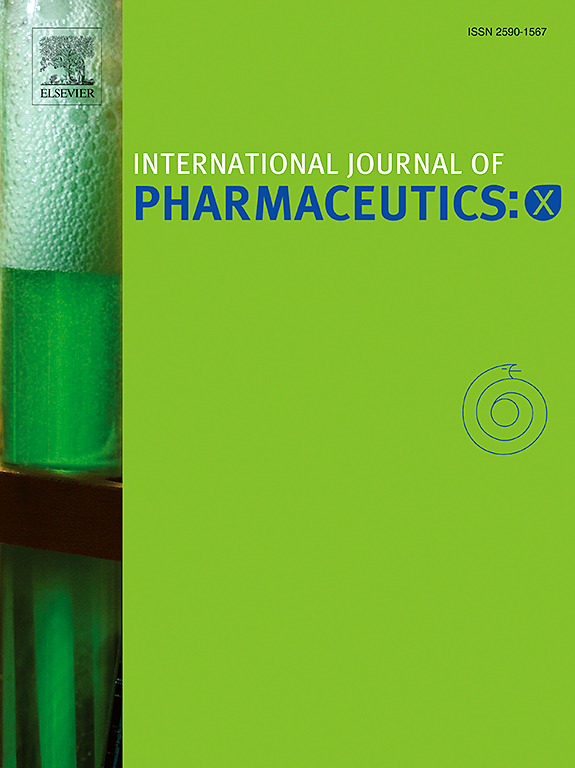Comparative study on two kinds of brain-targeted liposomes co-modified by RVGP and R9 in different ways
IF 6.4
2区 医学
Q1 PHARMACOLOGY & PHARMACY
引用次数: 0
Abstract
With the global aging population and rising tumor incidence, central nervous system degenerative diseases and brain tumors have emerged as critical threats to human health. Leveraging the biological properties of the blood-brain barrier (BBB), the development of dual-mediated brain-targeted liposomes via receptor-mediated and adsorption-mediated mechanisms holds promise for overcoming limitations such as lysosomal entrapment and saturation in single-receptor systems, thereby enabling efficient brain drug delivery. In this study, we constructed two types of dual-mediated liposomes using the BBB-specific ligand RVGP and cell-penetrating peptide R9 through distinct strategies: the monoligand liposome RVGPR9-SSL (incorporating both ligands as a single conjugate) and the biligand liposome RVGP-R9-SSL (displaying ligands as separate moieties). An in-depth comparative analysis of their BBB permeability and transport mechanisms was performed. Results demonstrate that RVGPR9-SSL circumvents lysosomal degradation via an endoplasmic reticulum-mediated transport pathway, exhibiting superior brain-targeted delivery efficiency and an excellent safety profile. These findings establish RVGPR9-SSL as an efficient brain-targeted drug delivery system with broad therapeutic potential for central nervous system disorders. Moreover, this study provides critical insights for the rational design of next-generation dual-mediated brain-targeted liposomal systems.

RVGP和R9不同方式共修饰两种脑靶向脂质体的比较研究
随着全球人口老龄化和肿瘤发病率的上升,中枢神经系统退行性疾病和脑肿瘤已成为威胁人类健康的重要疾病。利用血脑屏障(BBB)的生物学特性,通过受体介导和吸附介导机制开发双介导的脑靶向脂质体有望克服单受体系统中溶酶体夹带和饱和等限制,从而实现有效的脑药物递送。在本研究中,我们使用bbb特异性配体RVGP和细胞穿透肽R9通过不同的策略构建了两种双介导的脂质体:单配体脂质体RVGPR9-SSL(将两种配体作为单一缀合物结合)和双配体脂质体RVGP-R9- ssl(将配体作为单独的部分显示)。对其血脑屏障的通透性和转运机制进行了深入的比较分析。结果表明,RVGPR9-SSL通过内质网介导的转运途径绕过溶酶体降解,表现出优越的脑靶向递送效率和良好的安全性。这些发现表明RVGPR9-SSL是一种有效的脑靶向药物传递系统,具有广泛的治疗中枢神经系统疾病的潜力。此外,该研究为新一代双介导脑靶向脂质体系统的合理设计提供了重要见解。
本文章由计算机程序翻译,如有差异,请以英文原文为准。
求助全文
约1分钟内获得全文
求助全文
来源期刊

International Journal of Pharmaceutics: X
Pharmacology, Toxicology and Pharmaceutics-Pharmaceutical Science
CiteScore
6.60
自引率
0.00%
发文量
32
审稿时长
24 days
期刊介绍:
International Journal of Pharmaceutics: X offers authors with high-quality research who want to publish in a gold open access journal the opportunity to make their work immediately, permanently, and freely accessible.
International Journal of Pharmaceutics: X authors will pay an article publishing charge (APC), have a choice of license options, and retain copyright. Please check the APC here. The journal is indexed in SCOPUS, PUBMED, PMC and DOAJ.
The International Journal of Pharmaceutics is the second most cited journal in the "Pharmacy & Pharmacology" category out of 358 journals, being the true home for pharmaceutical scientists concerned with the physical, chemical and biological properties of devices and delivery systems for drugs, vaccines and biologicals, including their design, manufacture and evaluation. This includes evaluation of the properties of drugs, excipients such as surfactants and polymers and novel materials. The journal has special sections on pharmaceutical nanotechnology and personalized medicines, and publishes research papers, reviews, commentaries and letters to the editor as well as special issues.
 求助内容:
求助内容: 应助结果提醒方式:
应助结果提醒方式:


